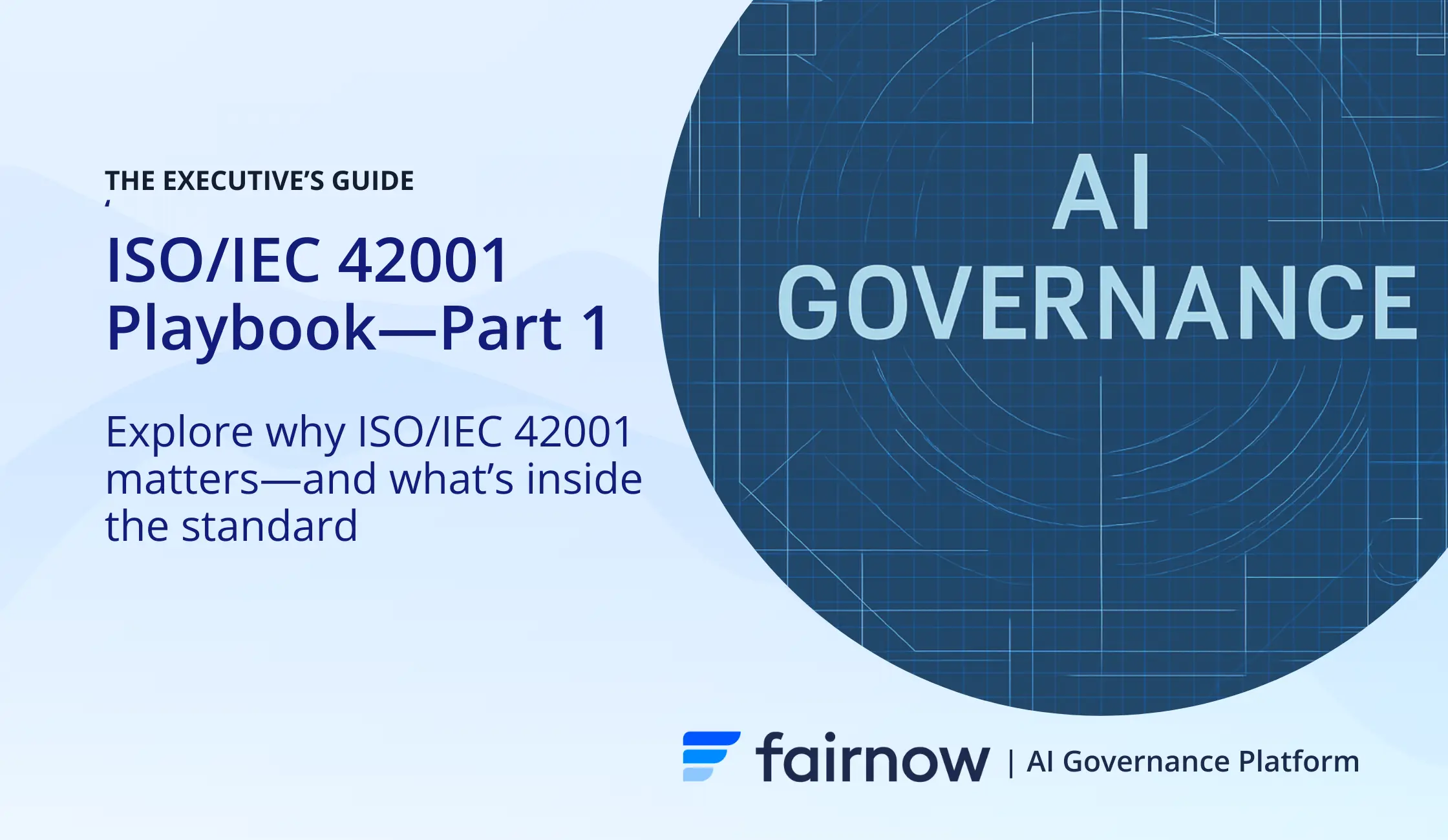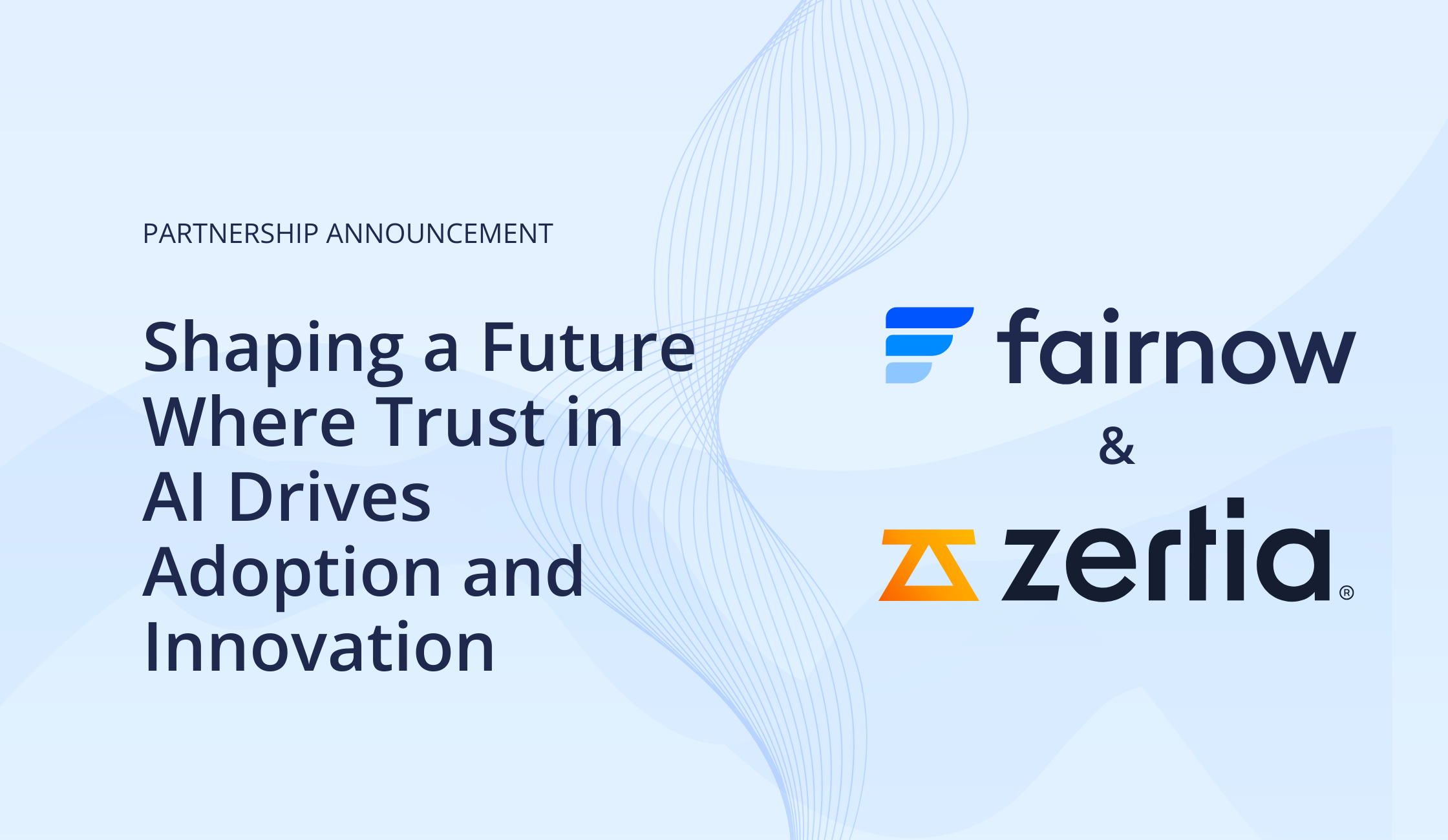In Part 1 of the ISO 42001 Playbook, we explored the foundational elements of the ISO 42001 standard, highlighting its role in establishing a structured approach to AI governance. We delved into its core principles, including risk management, transparency, accountability, and the importance of aligning AI practices with organizational values.
Building upon that foundation, Part 2 focuses on the practical aspects of implementing the ISO 42001 standard within your organization.. We’ll guide you through the stages of adoption, from initial assessments and organizational controls to system-level implementations and the certification process. Additionally, we’ll examine the strategic implications of adopting the standard, such as enhancing stakeholder trust, achieving regulatory alignment, and gaining a competitive edge in the AI landscape.
What Are The ISO 42001 Control Requirements?
ISO 42001 introduces a structured approach to AI governance by delineating controls at both the organizational and system levels. This dual-layered framework ensures that AI governance is comprehensive and adaptable to specific organizational contexts, enabling each AI system to be managed according to its unique risk profile and operational requirements, thereby enhancing compliance and mitigating potential vulnerabilities.
Organization-Level Controls
Establishing and fully implementing an AI governance framework under ISO/IEC 42001 involves several phases of work that organizations should approach methodically.
Before the organization can begin to define and implement new processes for AI governance, they should begin with a comprehensive assessment of the organization’s current AI practices and context, and divergences from ISO’s requirements. The exercise of establishing the organization’s AI context could take many forms, such as a SWOT (strengths, weaknesses, opportunities, threats) analysis. ISO also specifies that organizations should map out their stakeholder expectations, including customers, employees, and third parties. This baseline assessment helps identify what gaps the organization must close to reach compliance.
With this understanding, organizations can then define the scope of their AI Management System, and begin work on organization-level controls such as writing an AI policy, conducting an overall AI risk assessment, and devising repeatable processes for key activities such as impact assessments. They’ll need to determine which AI activities, applications, and business units will be covered. Buy-in from senior leadership is essential: they will need to explicitly accept accountability, and define the organization’s objectives and risk tolerances around responsible AI.
The rigor of implementing ISO 42001 will vary based on the organization’s size, industry and context. Large companies may need more formal governance structures with dedicated committees, specialized roles, and comprehensive documentation. Such organizations will benefit from integrating AI governance with existing governance processes for privacy and/or information security. On the other hand, smaller organizations can adopt more agile approaches with streamlined documentation and combined roles. They might initially focus on high-risk applications before expanding the scope of governance further.
System-Level Controls
Once the organization-level controls are in place, the organization can start to operationalize its commitments by building a complete inventory of all AI systems in use by the organization, both developed in-house or purchased from third-party vendors. This task is made more challenging by the fact that software vendors are now constantly deploying new AI tools and features within existing systems, and employees across your value chain will have to be educated on their new roles.
Once inventoried, your teams will begin to assemble application or system-level documentation. System documentation will cover design and technical specs, training data, and impact assessments of intended use cases and foreseeable misuses. Once a system is deployed, organizations must also document how they are monitoring AI performance, measuring compliance, and any testing. Your organization will set basic requirements for these controls, but these requirements will vary by risk level. The three major factors to consider in system risk are its training data and data inputs, the outputs of the system, and its use cases. Productivity tools such as writing aids or coding assistants may have relatively slim requirements. Documentation of internally-developed tools for high-risk use cases such as HR evaluations will have much more extensive needs.
In our experience, common implementation challenges include data governance complexities, particularly regarding data quality, provenance, and privacy; documentation burdens that must balance compliance needs against practicality; and ensuring vendors who provide AI are assessed according to the organization’s AI governance policies. The organizations who adopt ISO 42001 successfully do so with staged approaches, templates and tools that simplify compliance. They must set clear prioritization based on risk, and develop AI governance capabilities across the organization through training and context sharing.
Pro Tip: Conduct a Comprehensive Gap Analysis
Before initiating ISO 42001 implementation, perform a thorough gap analysis to assess your current AI practices against the standard’s requirements. This evaluation will help identify areas needing enhancement and inform your implementation strategy.
Comparing ISO 42001 with Other AI Management Frameworks
The AI and data governance landscape features numerous frameworks and standards that organizations must navigate. ISO 42001’s focus on defining a complete AI management system complements other frameworks well.
The NIST AI Risk Management Framework (RMF) shares ISO 42001’s emphasis on risk-based governance, but provides more detailed technical guidance on some specific AI risks and mitigations. While ISO 42001 establishes management processes for addressing AI risks, and provides more robust recommendations on specific documentation required, the NIST framework offers more specific technical controls and testing methodologies. Organizations can leverage both by using ISO 42001 for management system structure and NIST RMF for deeper technical implementation guidance. Perhaps the most significant difference is that ISO 42001 can lead to a certification, whereas the NIST AI RMF is a guideline, not a certifiable standard.
The EU AI Act takes a regulatory approach, establishing legal requirements for AI systems based on risk categories. ISO 42001 potentially offers a pathway for organizations to demonstrate compliance with various aspects of the EU AI Act, particularly its requirements for risk management, documentation, and human oversight. While alignment is not perfect—the EU legislation contains more specific requirements for certain high-risk applications—organizations implementing ISO 42001 will build fundamental capabilities that support easier regulatory compliance as the EU AI Act is rolled out over the coming years.
ISO 42001 focuses on AI management systems, but it is only part of a library of AI-related standards released by the International Standards Organization. ISO/IEC 23894 (AI Risk Management) gives specialized guidance on risk management. It complements 42001 by offering deeper guidance on the assessment and mitigation of AI risk. Organizations implementing ISO 42001 often find 23894 a valuable companion for developing more sophisticated risk management practices, especially for more technically complex systems.
Preparing for ISO 42001 Certification: From Pre-Audit to Compliance
As more organizations realize that AI risk management will be one of the defining challenges of the next few years, leading companies will want to easily demonstrate their leadership in this realm. An auditor certification for compliance with ISO 42001 will be a major competitive advantage for organizations selling AI systems and services, and companies seeking to demonstrate their risk posture to investors and regulators.
ISO 42001 certification represents a formal attestation that an organization’s AI Management System conforms to the standard’s requirements. This certification process typically involves engaging an accredited third-party auditor to conduct a thorough assessment of the organization’s governance structures, policies, procedures, and evidence of their implementation. The certification audit evaluates both system design (whether appropriate processes exist) and operational effectiveness (whether processes are followed in practice).
Certification begins with an initial assessment (or “pre-audit”) to determine the scope of the process and plan accordingly, followed by a formal two-stage audit. Stage one examines documentation and system design, while stage two evaluates operational implementation through interviews, observation, and evidence review. Successfully certified organizations receive a certificate valid for three years, with surveillance audits conducted periodically to verify ongoing compliance.
When selecting an auditor, companies have many options. Auditors must themselves be approved by national accreditation bodies that verify their competence and impartiality.
As José Manuel Mateu de Ros, CEO of Zertia, highlights, “Certifiers must be backed by top-tier bodies like ANAB. Their deep technical reviews and ongoing audits ensure credibility — it’s no coincidence that regulators, partners, and Fortune 500 clients specifically look for the ANAB stamp.”
Organizations seeking certification should select accredited certification bodies with relevant industry experience and AI expertise.
Externally, certification signals to customers, partners, and regulators that an organization takes AI governance seriously, and meets internationally recognized standards for responsible AI management. This can provide a competitive advantage, facilitate business relationships where AI trust is crucial, and potentially streamline regulatory compliance efforts. Some organizations may eventually require ISO 42001 certification from their AI vendors and partners as a baseline qualification for business relationships.
Internally, the certification process drives organizational discipline around AI governance, creating accountability for implementing and maintaining robust practices. The external assessment, led by experienced auditors, helps organizations identify blind spots and improvement opportunities. Moreover, the ongoing surveillance audit requirement ensures that AI governance remains a priority rather than a one-time initiative.
WATCH NOW: Learn more about the Pre-Audit to Certification Journey Process.
Strategic Implications of ISO 42001 Adoption
Adopting ISO 42001 as a framework for an organization’s AI management system carries significant strategic implications beyond technical compliance. Organizations that thoughtfully implement the standard can leverage it to achieve broader business objectives and competitive advantages.
ISO 42001 provides a structured pathway for AI governance maturity, enabling organizations to evolve from ad hoc approaches to systematic practices. The standard’s emphasis on continuous improvement encourages progressive enhancement of governance capabilities, allowing organizations to start with focused implementation around high-risk applications before expanding to enterprise-wide coverage. This maturity journey aligns with broader digital transformation initiatives by ensuring that technological innovation occurs within appropriate governance guardrails.
For multinational organizations, ISO 42001 offers a framework for cross-border compliance amid an increasingly complex regulatory landscape. While not guaranteeing automatic compliance with jurisdiction-specific requirements, the standard establishes foundational capabilities that can be adapted to various regulatory regimes. Organizations can implement ISO 42001 as a baseline governance system, then layer region-specific controls where needed to address local regulations. This approach is particularly valuable as AI regulations continue to evolve globally, providing a stable governance core amid regulatory flux.
In the domain of ethical AI development, ISO 42001 helps organizations translate aspirational values into operational practices. Rather than treating ethics as an abstract philosophical concern, the standard embeds ethical considerations into concrete governance processes like risk assessment, stakeholder engagement, and testing requirements. This practical approach to ethics helps organizations avoid reputational damage from AI mishaps while building stakeholder trust through demonstrated commitment to responsible practices.
Early adopters of ISO 42001 will realize distinctive competitive advantages. As AI becomes increasingly embedded in critical business functions, stakeholders from customers to investors to regulators are demanding greater assurance about AI governance. Organizations that achieve certification ahead of industry peers can differentiate themselves in the market, potentially winning business from risk-averse clients, attracting partnerships with organizations that prioritize responsible AI, and appealing to consumers who value ethical considerations. Moreover, early adoption allows organizations to shape implementation practices rather than following established patterns, potentially influencing how the standard is interpreted within their industry.
Pro Tip: Treat Governance as an Ongoing Process
View AI governance not as a one-time project but as an evolving practice. Establish workflows and documentation processes that integrate oversight, testing, and continuous improvement into daily operations.
ISO 42001: A Strategic Imperative for Responsible AI Governance
ISO 42001 marks a significant milestone in the evolution of AI governance, providing organizations with a structured framework to manage the unique challenges of artificial intelligence. As this series has explored, the standard offers comprehensive guidance on establishing governance structures, managing AI-specific risks, ensuring transparency and accountability, and demonstrating responsible practices to stakeholders.
For business executives and professionals working with AI, ISO 42001 represents an opportunity and an imperative. The standard provides a blueprint for building organizational capabilities that will become increasingly crucial as AI applications grow more powerful and pervasive. Implementing robust governance practices now will mean organizations can position themselves for a future where responsible AI management will be a baseline expectation.
The time for establishing robust AI Risk Management practice, anchored by AI compliance software, is now, before regulatory requirements or marketplace expectations make it mandatory.
Keep Learning





